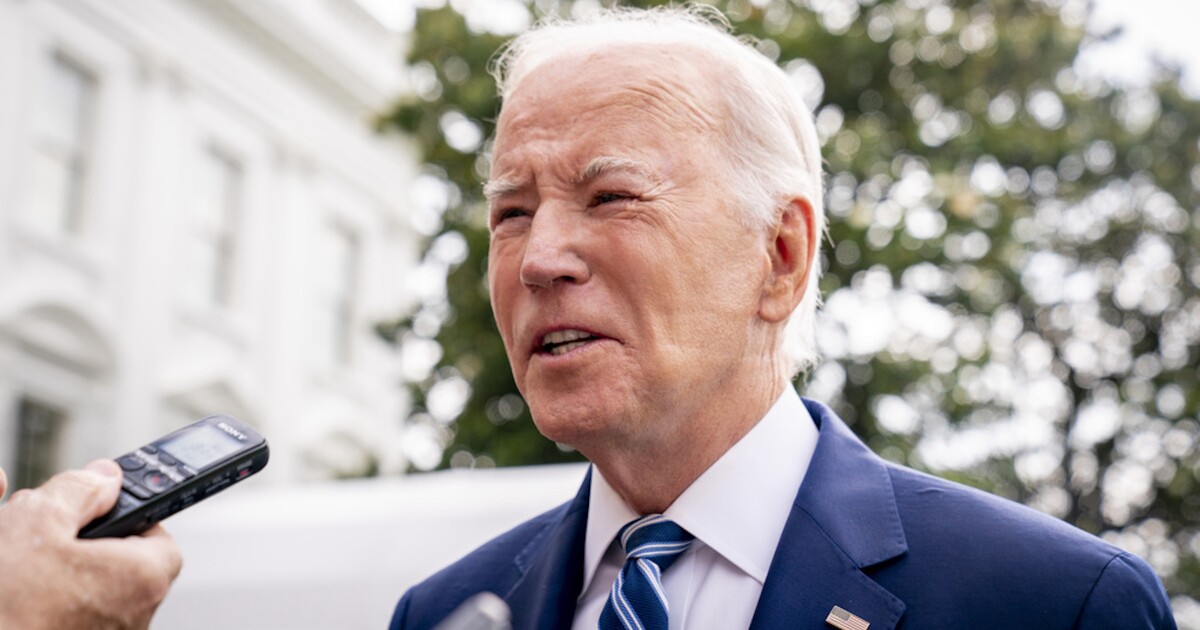

President Joe Biden promised a “fundamental break” with “trickle-down economics” in a speech on Wednesday in which he relied on a number of misleading claims to make his point.
Touting “Bidenomics,” the White House’s name for its economic agenda heading into the 2024 race, Biden floated a plan that would involve spending more taxpayer money and boosting union labor.
BIDEN MAY BUCK BIPARTISAN VOTE TO KEEP MORTGAGE OVERHAUL IN PLACE
But his assessment of how well the economy has performed under his leadership was inaccurate. Most disapprove of the way Biden has handled the economy; only 34% of U.S. adults think Biden has had successful economic policies.
Here is a fact check of Biden’s speech.
“My predecessor enacted the latest iteration of the failed theory. Tax cuts for the wealthy. It wasn’t paid for, and the estimated cost of his tax cut was $2 trillion.”
Former President Donald Trump‘s tax cuts did not benefit only the wealthy, and they didn’t cost the government nearly as much as critics claimed.
Last year, the Congressional Budget Office actually said the government is expected to collect more revenue over the next decade than it had projected before the tax cuts were signed into law.
In fiscal 2018, the first year after Trump signed the tax cuts into law, the federal government actually collected slightly more revenue overall than it had the previous year.
Corporate tax revenues exceeded CBO’s projections for 2018, the first year after the Trump tax cuts were in effect, and it blew well past expectations in 2022 after a dip during the pandemic.
The decrease in the corporate tax rate also coincided with a boom in private investment, which economists say led to wage growth and job creation.
And while the tax cuts did offer a benefit to the highest earners, they also helped middle- and low-income people as well. Most taxpayers experienced at least some type of reduction to their tax bill, helping average household incomes to rise.
“We created 13.4 million new jobs. More jobs in two years than any president has ever made, in four.”
This is a highly misleading claim because most of those supposedly new jobs were simply part of the economy’s recovery from the pandemic.
In 2020, the economy shed 9.4 million jobs due to COVID-19 lockdowns, according to the Bureau of Labor Statistics. Some estimates have put the job losses even higher.
That means at least two-thirds of the jobs Biden claims to have created were just old jobs returning after the pandemic.
Netting out the jobs that replaced those lost during the pandemic, Biden created around 4 million jobs his first two years in office.
For comparison, Trump created more than 5 million jobs during his first two years in office.
“Wind and solar are already significantly cheaper than coal and oil. You’re not going to see anybody building a new coal-fired plant in America — not just because I’d like to pass a law to say that; it’s too expensive.”
One key reason that renewable energy is now cheaper than traditional energy production is because the Biden administration has offered sweeping tax breaks and subsidies to green energy companies.
The Biden administration has also pushed more restrictive regulations on coal and oil producers, making their cost of compliance more expensive.
That has made building wind and solar power plants appear more affordable. Companies can take advantage of tax breaks for pursuing solar energy projects, for example, or apply for billions of dollars in grants for projects that reduce greenhouse gas emissions.
The combination of pressure on coal and oil production and handouts to green energy production have helped skew the prices.
“Today, inflation is less than half of what it was a year ago. And that inflation [was] caused by Russia and by the war in Ukraine and by what was going on.”
Inflation still remains significantly higher than before Biden took office, even if it has fallen from the heights of last year.
Before Biden took office, the consumer price index, a measure of inflation, rose 1.4% for 2020.
The CPI climbed 4.9% from April 2022 to April 2023, meaning prices this year are still rising far faster than before Biden’s inauguration.
While inflation was indeed worse last year, with prices jumping by 8.6% between May 2021 and May 2022, it remains a significant problem for many at nearly four times the level it was before Biden’s presidency.
That makes Biden’s claims about inflation disappearing somewhat misleading.
And the war in Ukraine did not cause inflation. Gas prices were significantly higher before the Russian invasion of Ukraine even began than they were during the Trump administration, for example; even though the conflict did drive prices up higher, the problem had already existed for months.
Critics have blamed Biden’s obstruction of domestic energy production in part for the rise in gas prices that began in 2021.
“When I took office, unemployment was over 6%. With the American Rescue Plan, we provided relief and support directly to working-class families. Our economy came roaring back. Unemployment dipped below 4% by the end of my first year in office.”
Like Biden’s claim about the number of jobs created, this statement is misleading because the unemployment rate was artificially high when he took office.
The unemployment rate had already begun to come down from its high of 14.8% in April 2020 by the time Biden took office.
Ending lockdowns and easing pandemic restrictions were the primary drivers of the unemployment rate’s fall, but Biden opposed both as a presidential candidate.
What’s more, the current unemployment rate — which comes amid a labor shortage that, according to Biden’s critics, was at least partially caused by the size of pandemic-era stimulus payments — is still not quite as low as it was under Trump before the pandemic.
The national unemployment rate was 3.6% in January 2020, just before COVID-19 began to spread; the national unemployment rate was 3.7% last month.
“Just in my first two years in office, my team and I reduced the deficit by $1.7 trillion.”
Biden has previously touted the deficit reduction that occurred on his watch, and it’s been misleading every time.
The national debt grew by $7.8 trillion during Trump’s four years in office.
But much of that occurred in 2020 as a result of emergency pandemic spending.
The deficit at the end of fiscal 2020 was more than triple what it was at the end of fiscal 2019, a result of the massive rescue packages Congress passed to blunt the effects of lockdowns.
Some of those packages created expensive programs that lasted until Biden was in charge. The Paycheck Protection Program, for example, expired in May 2021.
CLICK HERE TO READ MORE IN THE WASHINGTON EXAMINER
The end of pandemic programs technically reduced the deficit on Biden’s watch, but it was not because deficit reduction was a focus for the president.
In fact, Biden has pushed for record levels of spending, and he asked Congress for relief funds in 2021 well in excess of what was needed at the time.







